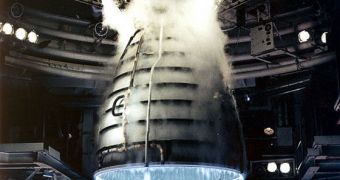The Oakville-based Napa Wine Company is currently the proud owner and tester of an innovative hydrogen production method that may very well represent the first such technique of producing the important chemical that is renewable. The refrigerator-sized generator uses wastewater from the winery, alongside special microbes and a bit of electricity. The electrolysis system appears to be yielding results, its managers say. If further tests are also conclusive, then we could see this method taking roots in several industries, e! Science News reports.
“This is a demonstration to prove we can continuously generate renewable hydrogen and to study the engineering factors affecting the system performance. The hydrogen produced will be vented except for a small amount that will be used in a hydrogen fuel cell,” the Kappe Professor of Environmental Engineering at the Pennsylvania State University (Penn State), Bruce E. Logan, explains. In the future, the company would be interested in using hydrogen produced through the new method to power up electrical systems and also to run vehicles, as fuel cells.
“It is nice that Napa Wine Company offered up their winery and facilities to test this new approach. We chose a winery because it is a natural tourist attraction. People go there all the time to experience wine making and wine, and now they can also see a demonstration of how to make clean hydrogen gas from agricultural wastes,” Logan adds. There is a number of processes at a winery that produce wastewater, including wine making, grape disposal, cleaning equipment, as well as a host of other processes.
The company already has a wastewater treatment facility at the location, and the wastewater that does not get converted into hydrogen will be processed there, and then used for irrigations in the vineyards. The generator itself will process close to 1,000 liters of wastewater per day. It consists of 24 modules, each of them outfitted with six electrode pairs. The anodes are made up of carbon, and the cathodes out of stainless steel. Naturally occurring bacteria convert wastewater into electricity, but, by increasing the voltage, experts can trigger the formation of hydrogen on the stainless steel.
“The composition of the wastewater will change throughout the year. Now it is likely to be rather sugary, but later it may shift more toward the remnants of the fermentation process,” Logan concludes.

 14 DAY TRIAL //
14 DAY TRIAL //